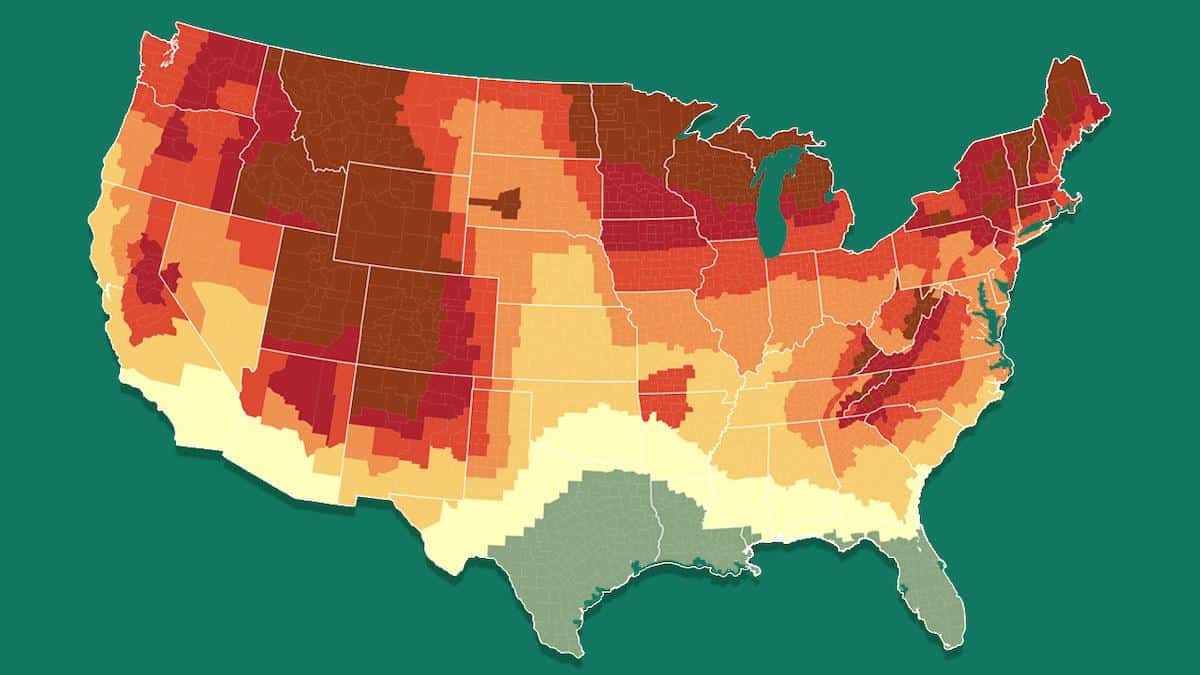
This Fall Foliage Map Tells You When to Expect the Most Colorful Leaves

The SmokyMountains.com Fall Foliage Prediction Map for the continental U.S. on Oct. 11, 2021. SmokyMountains.com
Students are heading back to school and the stores are already stocked with Halloween candy. Fall is on its way, and with it comes SmokyMountains.com Fall Foliage Prediction Map.
This is the ninth year in a row that the tourism site has released its map, which predicts when autumn leaves will be at their most vibrant in each part of the country, as Smithsonian Magazine explains.
“Similar to any meteorological forecast, leaf predictions will never be 100 percent accurate,” map founder and statistics expert David Angotti told TimeOut. “However, after publishing our predictive fall foliage map for nearly a decade, we are quite confident in our data sources, process, and algorithm.”
The map sources its data from governmental and nongovernmental sources like the National Oceanic and Atmospheric Administration, taking into account historical temperature and precipitation data, as well as the timing of previous peaks. This year, peak leaf season will come earliest to parts of the Rocky Mountains and northern Minnesota the week of September 20. Vermont will be at its best from September 20 to October 4, while North Carolina will peak between October 11 to October 25, according to Travel + Leisure. Much of Georgia and Oklahoma won’t start peaking until November 1.
For later-peaking states, the website is also releasing an updated map around mid September.
“Our experience combined with a scheduled mid-season update has us especially confident about this year’s predictions,” Angotti told Travel + Leisure. “Our goal is that this data-based, interactive tool will increase the number of people that are able to enjoy peak fall in 2021.”
In addition to telling viewers when leaves will change, Smoky Mountain also explains why. When days start getting shorter, leaves stop producing chlorophyll from photosynthesis, allowing other compounds present in the leaf to take over from the green. Fall leaves get their orange from beta-carotene, their red from anthocyanins and their yellow from flavonols.
Autumn leaves don’t last forever, however. The trees have to shed their leaves to prevent them from freezing in winter and damaging the whole tree. They do this by shutting off the veins that carry water and nutrients to and from the leaves. However, when those leaves fall, they continue to nourish the tree through the soil.
“It is not difficult to conclude that while the falling of the leaves protects the trees through winter, it’s likely that trees would not survive as well without the rich layer of dead leaves through the warm spring and summer months,” the website explained. “In this way, trees’ natural cycle provides health and sustainability for itself year after year.”
So check the map, throw on a sweater, put a hot cider in a thermos and get out there and observe that natural cycle in all its glory.
- January Warm Spells, March Freezes: How Plants Manage the Shift ...
- Climate Change Is Making Fall Leaves Change Color Sooner ...
- Emotional Video Shows Colorblind Park Visitors Seeing Fall Colors ...
- Climate Change Is Muting Fall Colors — It's the Latest Way Humans Have Altered U.S. Forests - EcoWatch

 233k
233k  41k
41k  Subscribe
Subscribe 